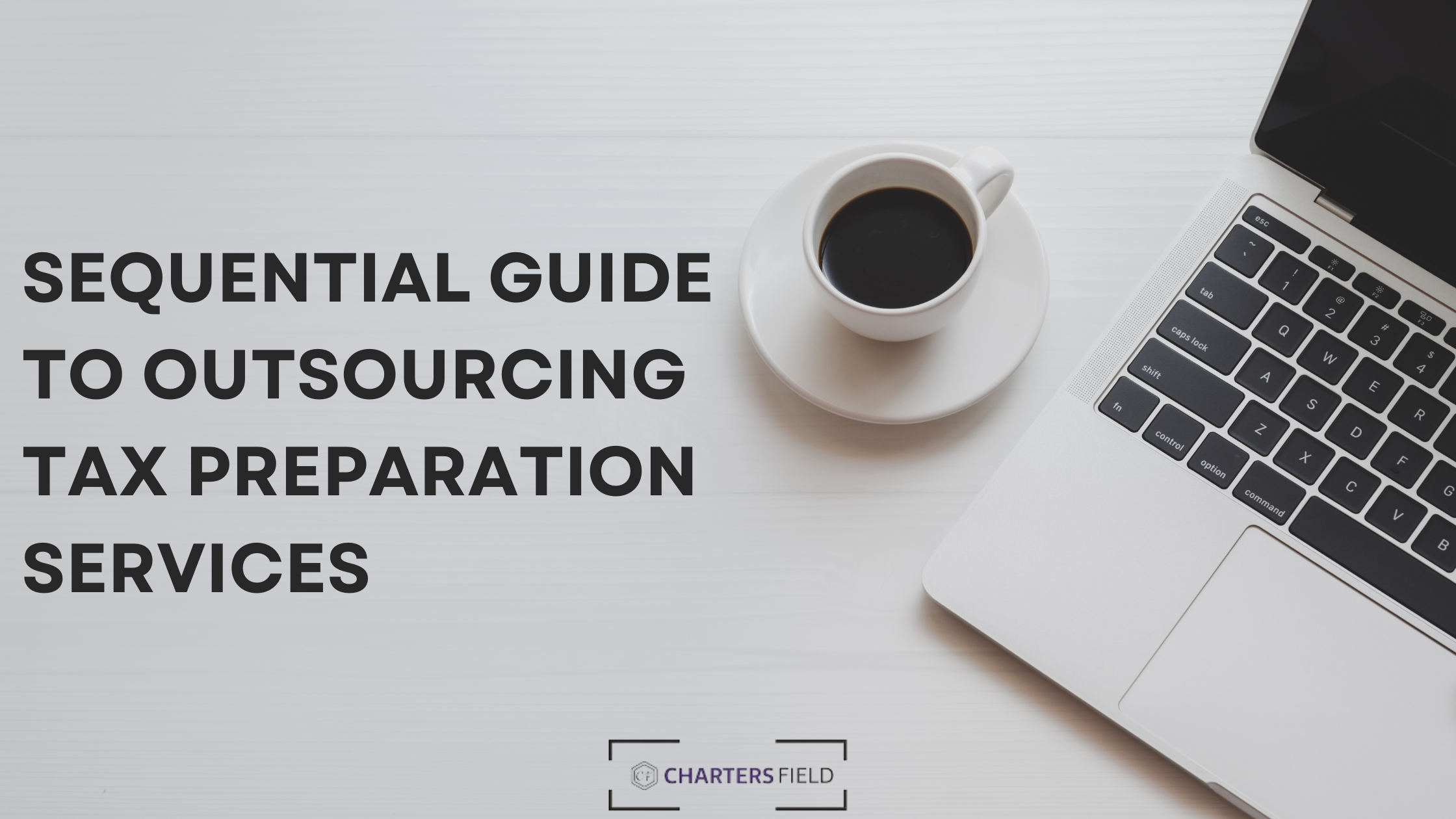Introduction:
In the rapidly evolving landscape of business operations, outsourcing has emerged as a strategic imperative for companies striving to optimize their functions and concentrate on core competencies. A prime area where this strategic maneuver is gaining considerable traction is in the outsourcing of tax preparation services. This blog seeks to offer an in-depth, step-by-step guide to the sequential process of outsourcing tax preparation services, accompanied by detailed insights to address common queries.
Section 1: Recognizing the Need for Outsourcing
Why Opt for Tax Preparation Outsourcing?
Outsourcing tax preparation services can be transformative for businesses across the spectrum. By delegating these critical tasks to seasoned professionals, companies stand to alleviate the burden on their in-house teams, ensure unwavering compliance with ever-evolving tax laws, and access the specialized expertise of professionals entrenched in the intricacies of tax preparation.
Is Outsourcing a Universal Solution for All Businesses?
While the advantages of outsourcing are evident, it is paramount to conduct a comprehensive evaluation tailored to individual needs and priorities. Regardless of the scale, both small to medium-sized enterprises (SMEs) and large corporations can derive substantial benefits. However, the decision to outsource should align seamlessly with the specific goals and available resources of each business.
Section 2: A Deep Dive into the Step-by-Step Guide
Step 1: Clearly Define Your Scope
Initiate the outsourcing journey by meticulously defining the scope of the tax preparation services earmarked for outsourcing. This entails a granular breakdown of tasks, explicit delineation of deadlines, and articulation of any unique requirements germane to your business.
Step 2: Identify Potential Service Providers
Embark on thorough research to compile a comprehensive list of potential outsourcing partners. Beyond mere consideration of reputational facets, delve into the depth of their tax preparation expertise, evaluate cost structures, and scrutinize client reviews for nuanced insights.
Step 3: Request Proposals
Forge a connection with selected service providers by extending a detailed Request for Proposal (RFP). This document should serve as a comprehensive repository, encapsulating vital information about your company, an expansive portrayal of the intended scope of work, and explicit delineation of expectations.
Step 4: Evaluate Proposals
Enter the evaluative phase by rigorously scrutinizing the received proposals. Factors such as pricing structures, depth of experience, client references, and the demonstrated ability to cater to your specific needs should be meticulously weighed. The outcome of this phase should culminate in the shortlisting of providers that resonate with your defined criteria.
Step 5: Conduct Due Diligence
Undertake a meticulous due diligence process on the shortlisted service providers. This includes a rigorous verification of credentials, a deep dive into client references, and a comprehensive assessment of their financial stability to ascertain alignment with your stringent business standards.
Step 6: Finalize Contracts
Having identified a suitably aligned service provider, proceed to the negotiation and finalization of the terms and conditions encapsulated within the outsourcing arrangement. This is a critical juncture where responsibilities, deliverables, timelines, and pricing should be unequivocally delineated within the confines of a formalized contract.
Step 7: Establish Communication Protocols
Sculpt effective communication channels and protocols to facilitate seamless interaction between your company and the outsourced service provider. This extends to the definition of reporting mechanisms and their frequency, fostering a culture of transparency in the outsourcing ecosystem.
Step 8: Provide Necessary Training and Resources
To fortify the outsourcing team for optimum performance, ensure the provision of comprehensive training on your company’s unique processes, systems, and any specific requirements. Equipping them with the necessary resources further bolsters their efficacy in executing assigned tasks.
Step 9: Implement Quality Control Measures
Establish a robust quality control mechanism to vigilantly monitor and evaluate the accuracy and completeness of the tax preparation services furnished by the outsourcing partner. This not only safeguards against potential discrepancies but also ensures the delivered work aligns seamlessly with your predetermined standards.
Step 10: Monitor and Evaluate Performance
Cultivate a culture of continuous performance monitoring by regularly assessing the outsourced tax preparation services against pre-established metrics. Periodic reviews serve as instrumental checkpoints, providing insights into the effectiveness of the outsourcing arrangement and facilitating necessary adjustments.
Step 11: Address Issues Promptly
In the event of issues or challenges surfacing during the outsourcing process, adopt a proactive stance by addressing them promptly. Upholding open lines of communication with the service provider fosters a collaborative environment conducive to issue resolution and optimal performance enhancement.
Step 12: Continuously Improve Processes
Champion a culture of perpetual improvement by actively collecting feedback, rigorously analyzing performance data, and swiftly implementing enhancements. This commitment to refinement ensures that the outsourcing process attains and sustains optimal efficiency and effectiveness over time.
Section 3: In-Depth Exploration of Frequently Asked Questions (FAQs)
Q1: What are the specific advantages of outsourcing tax preparation services for my business?
Outsourcing tax preparation services brings multifaceted advantages, including a reduced workload on the in-house team, assured compliance with tax regulations, and the opportunity to leverage the specialized skills of seasoned professionals.
Q2: What key factors should guide my decision in choosing a service provider?
The selection of a service provider should hinge on factors such as reputation, depth of experience, cost considerations, client references, and the demonstrated ability to cater to your unique needs. Rigorous due diligence is instrumental in identifying a reliable outsourcing partner.
Q3: Is outsourcing equally applicable to small businesses?
Absolutely. The scalability of outsourcing renders it suitable for businesses of all sizes. Small businesses, in particular, can benefit significantly by accessing specialized skills without the need to maintain a dedicated, full-time, in-house tax department.
Q4: How can I ensure effective communication with the outsourced team?
Effective communication is foundational to outsourcing success. Establishing clear communication protocols, defining reporting mechanisms, and leveraging collaboration tools collectively contribute to fostering effective communication between your company and the outsourced service provider.
Q5: What proactive steps can I take to address performance issues with the outsourcing partner?
Addressing performance issues requires a proactive approach. This involves maintaining open lines of communication, engaging in transparent discussions about concerns, and establishing clear expectations. Regular reviews and feedback sessions serve as invaluable tools for optimizing performance.
Q6: Can I customize the outsourcing arrangement to align with my business needs?
Indeed, outsourcing arrangements are inherently flexible and can be tailored to align seamlessly with your business needs. Collaborating closely with the service provider allows for the customization of the scope, deliverables, and terms to precisely meet the specific goals and requirements of your business.
Conclusion:
Outsourcing tax preparation services emerges not merely as a strategic move but as an intricate process that demands meticulous planning, thorough evaluation, and unwavering commitment to continuous improvement. This comprehensive guide, coupled with an exploration of frequently asked questions, equips businesses with the tools and insights necessary to navigate the outsourcing landscape with confidence. Ultimately, businesses stand to reap the substantial benefits of specialized expertise and operational efficiency through a well-orchestrated outsourcing strategy.



